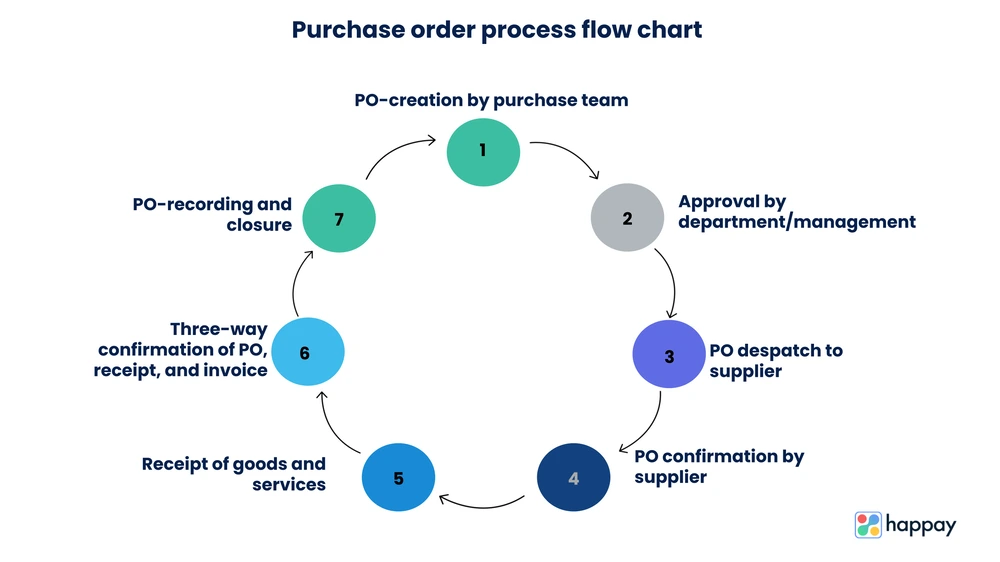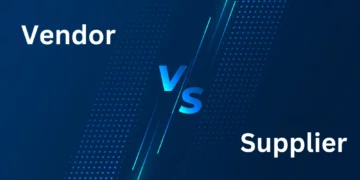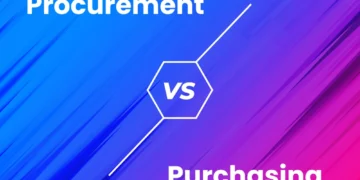Last Updated on November 28, 2025
Purchase order (PO)
A smooth purchase order (PO) process is crucial for accounts payable process efficiency.
The real challenge is managing purchase orders manually. Organizations using spreadsheets to track and approve POs struggle to gain insights into purchase decisions. The lack of a standardized purchase order workflow also causes production delays.
Enterprises are adopting procurement automation and digitization to avoid mistakes and streamline purchase processes. In this article, we explore the purchase order process basics and ways to automate it.
What is purchase order processing?
Purchase order meaning
Purchase order processing is an end-to-end system for creating, reviewing, tracking, and managing purchase orders to acquire goods and services. It also involves auditing purchases and processing vendor payments.
A purchase order process ensures timely PO processing with multiple compliance checkpoints and approval tasks. It’s part of the strategic procurement process that organizations use to confirm the actual need for goods and services before purchasing.
What is the PO processing time?
PO processing time refers to the time buyers take to convert purchase requisitions (PRs) into purchase orders (POs). Organizations record the processing time while creating procurement schedules.
Enterprises often need higher PO processing time because of duplicate orders, accidental order entries, and procurement overspending. Purchase order management solutions solve all these problems with real-time verification and rule-based approvals.
Steps in the purchase order process
In most scenarios, the purchase order workflow process includes nine steps.
1. Create purchase requests
2. Receive purchase requisition approval
3. Send out requests for quotes (RFQs)
4. Analyze and select vendors
5. Negotiate contracts and send POs
6. Receive goods and services
7. Receive and verify invoices with three-way matching
8. Authorize invoices and pay vendors
1. Create purchase requests
The first step is to create a purchase order request for departmental or production needs. This request should outline the company name, items, PO numbers, purchase priority, budget, and delivery timeline.
The PO requestor now shares the request with managers and accounting teams for approval. The approval process reduces errors and ensures the PO meets business budgeting guidelines.
2. Receive purchase requisition approval
Organizations generally approve or reject purchase requisitions via email or verbally. Some enterprises may need the PO requestor to fill in additional budget verification forms, expense approval documents, or statements of work (SOW). The requisition becomes a PO after approval.
3. Send out requests for quotes (RFQs)
At this stage, companies send RFQs to a selected few or an approved list of vendors. The goal is to get the vendors to submit bids based on the PO. Besides pricing, they also submit payment terms, delivery conditions, service schedules, support availability, and quality details.
4. Analyze and select vendors
Now, an organization analyzes RFQs per its strategic sourcing policies. The vendor selection process depends on factors like vendor credibility, capability, references, prices, delivery conditions, and other terms.
5. Negotiate contracts and send POs
Now, companies and vendors negotiate contracts in a way that benefits both parties. The contract negotiation round may involve multiple discussions on payment terms, delivery, quality, and support. Ultimately, the company finalizes and sends the PO to the selected vendor. The company and the vendor enter a legally binding contract.
6. Receive goods and services
Now, the vendor dispatches goods and services. Upon receiving, the buyer company verifies product quality and specifications against the terms discussed.
The company must notify the vendor of quality check failures or other shortcomings. Finally, the supplier also shares an invoice with the price and payment request after completing delivery.
7. Receive and verify invoices with three-way matching
The purchasing company matches the supplier invoice against the PO at this stage. The onus here is on the purchasing department to verify the charges and approve the invoice.
8. Authorize invoices and pay vendors
The final step of the purchase ordering process is to approve the supper invoice. The finance team from the buyer company executes invoice processing and records the transaction in the cashbook.
Suggested Read: What is Invoice Management?
Purchase order process flowchart
A purchase order process flow starts with purchase requisition creation and approval. Then, an organization sends out RFQs to invite bids from vendors.
After selecting a vendor, the company negotiates the contract and creates a PO. Then, the supplier delivers products and shares an invoice. The buying company uses three-way matching to verify the invoice against PO, supplier invoice, and receipt notes. Finally, the finance team approves and pays the invoice.

Importance of purchase order process
An efficient purchase order process is key to maintaining purchase-related audit trail records and legally binding contracts. It also aids organizations in tracking budgets and ensuring purchases align with business policies. The result is improved financial control, efficiency, and visibility.
Let’s look at how structured purchase management helps buyers, vendors, and finance teams.
1. Simplifies inventory management
Frequent stock-outs and dead stock disrupt production schedules. An efficient PO tracking process aids organizations in accessing monthly PO records for identifying discrepancies between actual stock purchased and inventory records.
This ability to cross-check inventory against POs becomes easier with a systemic purchase order management process.
2. Makes accounts payable process efficient
An efficient process results in accurate purchase orders that enable finance teams to process and pay invoices confidently during procurement. Moreover, these legal documents create paper trails that help companies during legal recourse against duplicate orders, invoice discrepancies, and false transactions.
3. Offers better control over retail KPIs
A streamlined process provides insights into retail metrics like order rates. Using these KPIs, they can accurately estimate order delivery dates and plan shipment accordingly. Customer-facing companies also use PO workflows to confirm addresses, contact information, and recipient details.
4. Saves time and money
Improving PO management aids organizations in tracking orders, approving invoices, and processing payments without manual effort. Having all the data in one place also eases how finance teams forecast cash flow, analyze purchase data, and plan future purchases.
Also, Read: Spend Analytics in Procurement
Benefits of using a purchase order process in your organization
Purchase order automation offers numerous benefits over paper-based business processes. Digitization helps organizations boost PO approval speed, streamline order management, and improve buyer-vendor relationships. Here are a few other benefits.
- Real-time access to spend data
- A transparent process for employees
- Visible, single source of truth for finance teams
- Fewer human errors
1. Real-time access to expense data
Traditionally, finance teams are unaware of company purchases until the three-way matching stage, where they verify goods receipt notes, supplier invoices, and POs. So, they don’t always know the amount their company has committed to spending with suppliers.
Digital processing makes POs instantly available to finance teams. Further, keeping a close eye on the supply chain has additional benefits. The result is easy actual, future, and committed spend analysis for financial planning and steady cash flow.
2. A transparent process for employees
Purchase order software makes it easy for enterprise users to create POs using a standard process across the organization. Plus, these systems automatically reject incomplete or flawed POs, saving time spent in iterations and future reconciliations. This ease of creating POs ensures correct data entries.
3. Visible, single source of truth for finance teams
A centralized purchase order management system creates a single source of truth for finance teams. For example, they can look at each PO to understand payment information such as terms, ordered items, and the necessity of these items.
Enterprises can also connect business credit cards and expense claims to their PO system for better visibility into company expenses.
4. Fewer human errors
Manual processes are highly error-prone. Automation not only prevents errors but also streamlines processes, saving organizations precious time.
Streamlining the PO workflow can also help companies with reducing processing time. Let’s see how you can accomplish this.
Also, Read: Centralized and Decentralized Purchasing
Common mistakes in the purchase order process
Common purchase order management mistakes include going beyond the set budget, not storing enough information, and lack of negotiation, to name a few. Explore how these mistakes cost businesses and how to address them in this section.
- Not using an automated PO system
- Exceeding the budget
- Not negotiating with suppliers
- Neglecting commercial conditions
- Lack of a compliance policy checklist
1. Not using an automated PO system
The PO system should capture all essential details, such as delivery dates, order summary, requestor name, and quantity of goods. Organizations relying on paper-based processes often end up creating incomplete POs. This lack of accurate documentation prevents the accounts team from tracking and forecasting cash flow.
2. Exceeding the budget
Organizations with poor cost management policies often struggle with purchase orders exceeding the budget. Setting monthly budgets is a great way to prevent overspending. These companies should track spending to flag over-budget purchases in real-time.
3. Not negotiating with suppliers
Another common purchase order process mistake is not negotiating the price with suppliers. Once the vendor shares the catalog price, an organization should always negotiate deals for repeat or bulk orders. Also, consider asking for a discount on shipping and other charges.
4. Neglecting commercial conditions
Organizations not paying attention to purchasing terms and commercial conditions often face costly legal issues later. These conditions may include extended warranties, liquidated damages, payment conditions, and bank guarantees. Communicating these terms during the RFQ helps vendors share costs that accommodate all desired requirements.
5. Lack of a compliance policy checklist
Having pre-defined compliance rules is vital to maintaining procurement consistency and reliability. Consider creating a compliance policy checklist outlining all necessary steps and red flag moments. Organizations can streamline the PO workflow better once every employee starts following the checklist.
Organizations making these mistakes do so because they rely on manual systems. Let’s look at the downside of manual PO processing.
Quick Read: 10 Best Procurement Software
Best practices in the purchase order process
Inefficient purchase order processes often result in high cash burn, overspending, and inaccurate record keeping. Reviewing the process periodically and establishing goal-oriented results can be a great way to keep the purchase process efficient. Check out the best practices below to improve PO processes.
- Analyze the current buying process
- Lay out the PO process goals
- Share written guidelines for the entire PO process
- Create a list of approved vendors
- Implement purchase guidelines
- Assign an internal stakeholder for process management
- Leverage purchase order process management systems
- Analyze the current buying process. Reviewing the existing process helps organizations spot areas of improvement. Consider mapping out bottlenecks, the number of required approvals, the budgeting process, and key stakeholders to determine what impacts the current process most.
- Lay out the purchase process goals. Organizations should also establish KPIs like delivery speed, PO accuracy, and defect rate to track and mitigate inefficiency issues.
- Share written guidelines for the entire PO process. A well-written process policy keeps employees up-to-date with the latest procedures and best practices. This policy should include guidelines for creating POs, getting approvals, meeting budget guidelines, and passing internal reviews.
- Create a list of approved vendors. The time-consuming RFQ process often delays production. Organizations tackle this challenge by creating a list of preferred or approved vendors. Negotiating with these vendors is easy because of their long-term relationship with the organization.
- Implement purchase guidelines. Setting expense thresholds helps organizations create budget restrictions for different expense groups. These restrictions make it easy for finance teams to understand the maximum procurement budget.
- Assign an internal stakeholder for process management. Employees can reach out to the stakeholder in case of questions or doubts about the PO process.
- Leverage purchase order process management systems. Using a purchase order system is the best way to standardize and automate the PO process. For example, organizations can use these systems to create checklists for standard, contract, and blanket purchase orders. These checklists prevent duplicate purchases and streamline procurement.
Let’s look at the mistakes organizations make throughout the PO process.
Recommended Read: What is Intelligent Document Processing?
The challenges with the manual purchase order process
Manual processes can be costly, time-consuming, and inefficient. Every single purchase order requires too many manual checks and approvals for processing. As a result, teams spend more time managing POs during the approval loop than on value-added tasks.
According to the Centre for Advanced Procurement Strategy (CAPS) Research, the average cost of processing POs manually is around $217. The cost is so high because of the following challenges.
- Repetitive, time-consuming tasks
- Process delays
- Lack of Visibility and reporting
- Miscommunication
- Error management
1. Repetitive, time-consuming tasks:
Every PO goes through multiple stages, including requisition approval, RFQs, and negotiation. Repeating the entire process manually for multiple POs can be time-consuming for employees.
2. Process delays:
Urgent purchases often require approvals from different teams. This dependency on other teams slows the approval cycle, especially with a manual PO process.
3. Lack of visibility and reporting:
Purchases involve multiple stakeholders, including procurement teams, the finance department, suppliers, and end users. Manual PO handling gives organizations less control and visibility over the entire process. Plus, manual data entry makes accessing PO data from a single place difficult.
4. Miscommunication:
Using paper-based procurement forms increases the chances of information loss. Plus, companies struggle to track responsibilities and vendor interactions with these forms.
5. Error management:
Paper-based PO creation and tracking make it challenging to find errors by any party involved in the process. Companies may have to start from scratch in case of costly mistakes.
Organizations solve these manual processing challenges with PO process automation. Let’s see how.
Also, Read: Expense Management Automation
Automate your PO process
Purchase order automation digitizes PO creation and management with purchase order software. It streamlines time-consuming and error-prone manual PO processing. Automating PO management also helps organizations automatically enforce PO policies.
Purchase order automation software enables accounts payable teams to verify invoices faster. As a result, finance teams can efficiently point out wrong invoices, goods not received, or other discrepancies. This saves time and effort for finance teams.
How to automate your purchase order process?
Automating a purchase order process involves moving from spreadsheets to a purchase order management system. Follow the steps below for PO workflow automation.
1. Find a suitable procure-to-pay software
An end-to-end procure-to-pay (P2P) software simplifies the e-procurement journey, from identifying needs to paying invoices. Organizations can pick flexible and customizable software based on business requirements.
2. Integrate it with the financial tech stack
The next step involves integrating the software with existing financial tools, including accounting software and ERPs. The seamless information flow among different systems ensures up-to-date financial data at all times.
3. Define PO policy and approval workflows
Organizations set up purchase order approval workflows at this stage to automate the requisition approval process. These workflows follow pre-defined rules to create PO requisitions, send them to approvers, and create and send POs to preferred suppliers. Consider making different workflows, as budgets and approval rules may vary across departments.
4. Implement automation
PO management solutions allow organizations to optimize purchase processes and gain visibility into their financial data. Organizations still using cumbersome spreadsheet filling to manage incoming orders should transition to automated PO management systems today.
Conclusion
Purchase orders are vital in procuring goods and services for the production and other business activities. Manual purchase order handling is error-prone and causes process delays. Purchase order process automation lets organizations streamline procurement and AP processes. Moreover, they gain insights into working capital and can predict cash flow better.
FAQs
The purchasing order process is a procurement workflow that organizations follow to verify the need for goods and services before making purchases. It also includes payment processing and paper trail auditing.
The four steps in purchasing are:
Identifying the need for goods and services
Evaluating and selecting suppliers with RFQs
Placing the purchase order
Receiving goods and services delivery
The purchase requisition (PR) process is an internal approval workflow for buying goods and services. The purchase order (PO) process is a legal document that buyers and sellers use to lay out business terms and proceed with the purchase.
A PR is for getting approvals for buying goods, whereas a PO is for purchasing goods. That’s the main difference between PR and PO.
A purchase order helps the buyer initiate the purchase process with a vendor. Sellers use orders or sales orders to verify and confirm the purchase order details.
A purchasing agent is responsible for the following:
Researching and evaluating vendors, goods, and services
Selecting vendors that offer the highest product quality
Ensuring cost-efficiency for the buyer










Discussion about this post